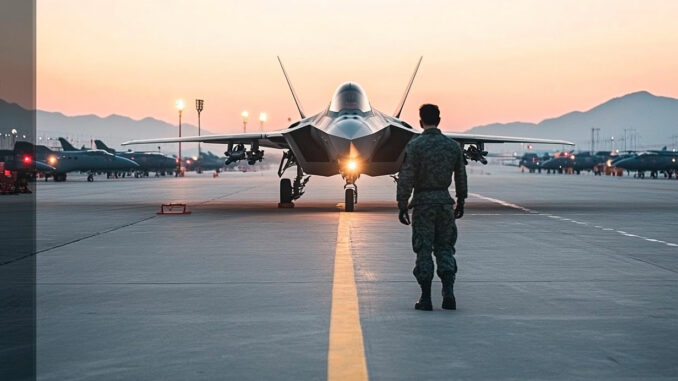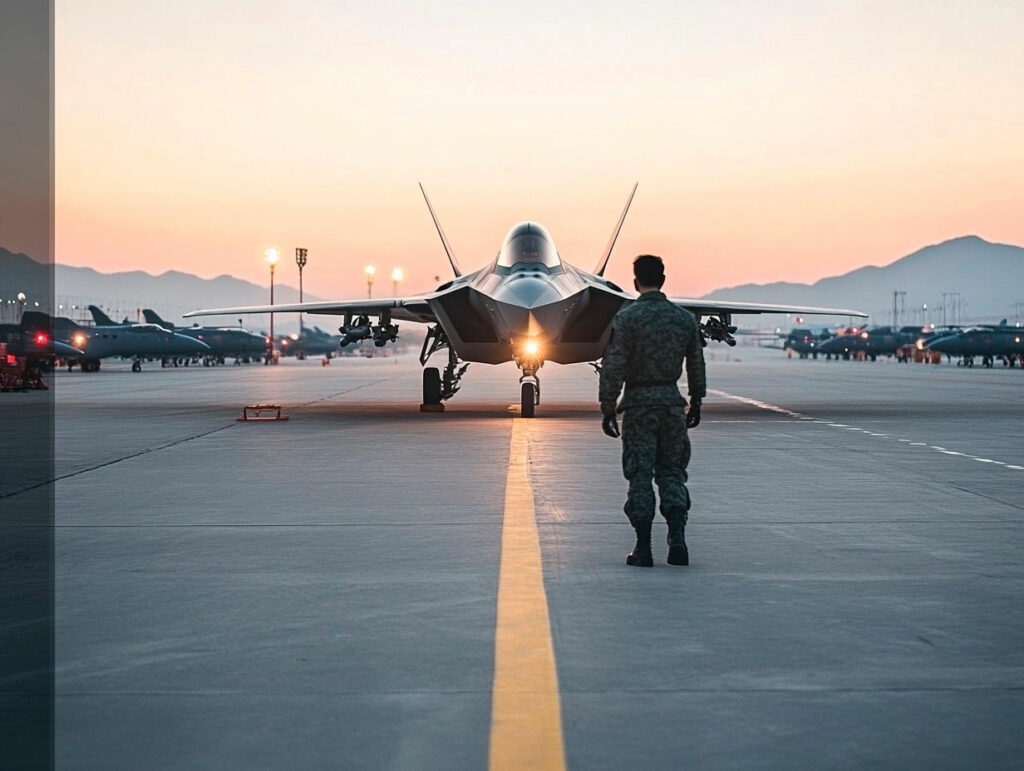
Technical analysis of Chinese military capabilities in 2030: coastal power, submarine warfare, global and nuclear projection in the Indo-Pacific.
The People’s Liberation Army (PLA) is strengthening its military capabilities in four major areas: coastal firepower, anti-submarine warfare (ASW), global power projection and theater nuclear capabilities. By 2030, these developments could complicate the operational environment for the United States and its allies in Asia. Ballistic missiles such as the DF-26 (range of 4,000 km) and the DF-27 (up to 8,000 km) threaten distant targets, while the Chinese navy (PLAN) is becoming a global force with more than 370 ships. The emerging nuclear triad, with around 1,000 warheads planned by 2030, increases the risk of escalation. These trends require urgent strategic choices to maintain deterrence.

Coastal firepower: an expanded threat in the Pacific
The PLA is investing heavily in its land-based strike capabilities, increasing their range and precision. The truck-mounted DF-26 intermediate ballistic missile is an example of this ambition. With a range of 4,000 km, it can strike at sea and land targets, such as Guam, which is located approximately 3,000 km from mainland China. This missile, which entered service in 2018, has an advanced guidance system that enables it to strike with precision. If deployed at bases in the Spratly Islands in the South China Sea, it could reach northern Australia, some 3,500 km away. The Pentagon has also reported the DF-27, a more recent missile with an estimated range of between 5,000 and 8,000 km, capable of hitting Hawaii (6,000 km) or Alaska (7,500 km) from the Chinese mainland.
In addition, the Chinese air force is modernizing its H-6 bombers, equipped with conventional ground attack missiles, and developing the future H-20 stealth bomber, expected in the 2030s. The latter, with a potential range of 8500 km without refueling, could cover the entire western Pacific with conventional ammunition. China is also exploring conventionally armed intercontinental ballistic missiles (ICBMs), a rare innovation that would further extend its threat.
Consequences
This extension of coastal firepower reinforces China’s so-called A2/AD (anti-access/area denial) strategy, which aims to keep opposing forces at bay. For the United States, Guam, a strategic pivot with its naval and air bases, is no longer a sanctuary. A coordinated attack with DF-26s and H-6s could neutralize these installations in a few hours, limiting American projection capability in the region. For Australia, the threat to its north, where there are bases such as Darwin (hosting around 2,500 American marines on rotation), complicates its defensive posture. This development is forcing the allies to rethink their missile defense systems, an expensive area: an American THAAD system costs around 900 million euros per battery, and several would be necessary.
Anti-submarine warfare: making up for a historical deficit
Historically weak in anti-submarine warfare (ASW), PLAN is stepping up its efforts to challenge the submarine superiority of the United States and its allies. It is equipping its surface ships, such as Type 052D destroyers, with variable depth sonars and towed sonars, capable of detecting submarines at distances of 50 to 100 km in optimal conditions. Since 2017, KQ-200 aircraft, similar to the American P-8 Poseidon, have been patrolling with acoustic buoys and magnetic sensors, covering areas of 200,000 km² per mission. Underwater, a network of fixed sensors runs along the Chinese coastline, particularly in the South China Sea, over an estimated length of 1000 km.
The PLA also incorporates autonomous systems and civilian vessels into this architecture. According to analysts Bryan Clark and Timothy Walton, this multidimensional network combines active and passive sensors with land-based and airborne weapon launchers. In 2022, the Chinese fleet had 12 Type 039A attack submarines, equipped with modern torpedoes with a range of 40 km, compared with only 4 in 2010.
Consequences
This increase in power reduces the American submarine advantage in the first island chain (Japan, Taiwan, Philippines). An American Virginia-class submarine, stealthy at 30 knots (55 km/h), could be detected earlier, limiting its ability to operate near the Chinese coast. For Japan and Australia, which operate 22 and 6 diesel-electric submarines respectively, the threat is growing in key areas such as the Taiwan Strait (130 km wide). This forces the allies to invest in countermeasures, such as underwater drones (unit cost of around 5 million euros), and to review their tactics to avoid a Chinese underwater denial zone.

Global power projection: an expanding navy
The PLAN, already the world’s largest fleet with 370 ships in 2022, aims to have a global presence by 2030. In 2012, it had 1 aircraft carrier, 23 destroyers and 52 frigates. In 2022, it will have 2 aircraft carriers, 8 cruisers, 42 destroyers, 47 frigates, 50 corvettes and 60 amphibious ships. By 2030, American projections foresee 5 aircraft carriers, 60 cruisers/destroyers, 135 frigates/corvettes and 42 amphibious ships, making a fleet of more than 400 units. The cruiser Renhai (Type 055), with 112 vertical launch tubes, illustrates this ambition: a single ship can fire missiles over 500 km.
The Chinese doctrine, detailed in Science of Military Strategy (2020), favors operations on the high seas and in polar regions. In 2023, Task Force 107, with a Renhai, circumnavigated Australia for 10,000 km, demonstrating this capability.
Consequences
This fleet threatens the maritime lines of communication in the Indo-Pacific, through which 30% of world trade (estimated value of 5 trillion euros/year) passes. A Chinese presence in the Indian Ocean or near the Arctic could disrupt routes to Europe and Africa. For the United States, maintaining an equivalent fleet (currently 290 ships) requires an annual budget of 200 billion euros, compared to 260 billion euros for China in 2024. Allies such as Australia must accelerate their AUKUS program, which calls for 8 nuclear submarines by 2040, to counter this expansion.
Nuclear modernization: a rapidly growing arsenal
The PLA is accelerating its nuclear modernization. In 2024, it had 600 operational warheads, compared with 200 in 2015, and aims for 1000 warheads by 2030, then 1500 by 2035. It operates 400 ICBMs and 550 launchers, with three new silo fields for 300 missiles. Type 094 submarines (six units, 12 JL-2 missiles each, range 8,000 km) provide deterrence at sea, while the future Type 096 and the H-20 bomber will complete the triad. Theater systems such as the DF-26 (range 4,000 km) and the DF-27 offer precise nuclear options.
Consequences
This expansion reinforces Chinese coercion in the Indo-Pacific. In the event of a crisis in Taiwan, limited nuclear strikes on regional bases (for example, Yokosuka in Japan, 1800 km away) could paralyze the allied response. The cost of countering this threat is high: a regional missile defense system would require investments of 50 billion euros over 10 years. Chinese nuclear proliferation also risks encouraging countries such as Japan or South Korea to review their non-nuclear stance, further destabilizing the region.
War Wings Daily is an independant magazine.